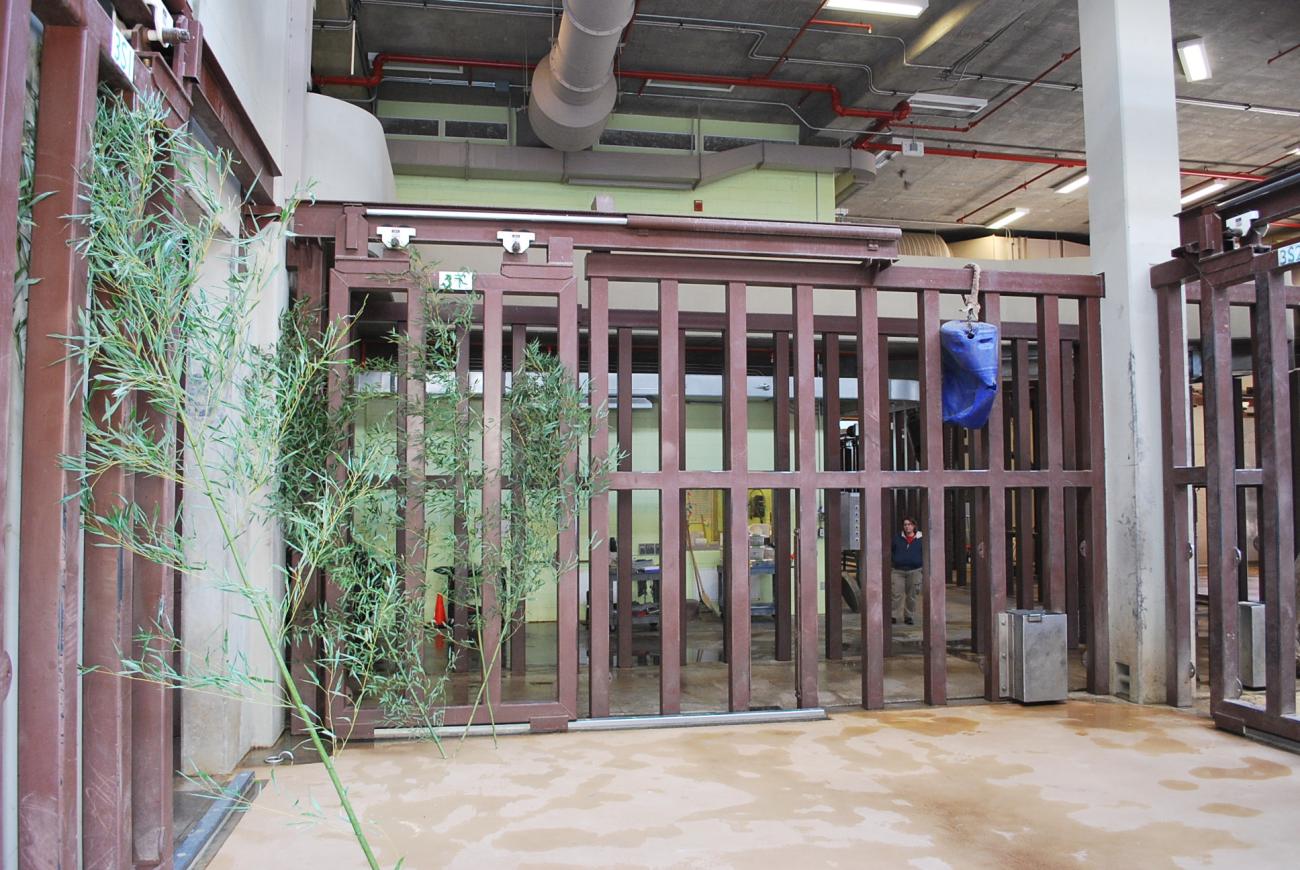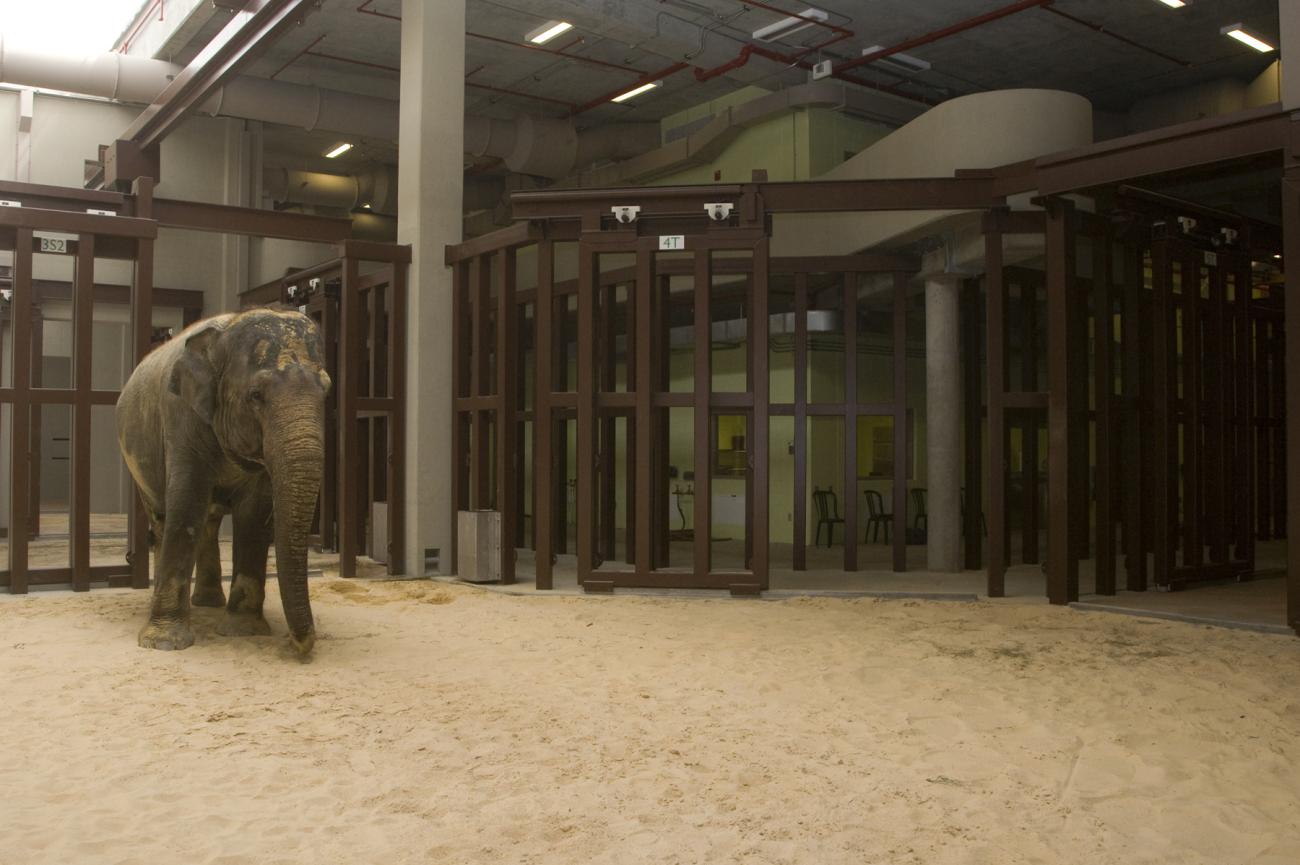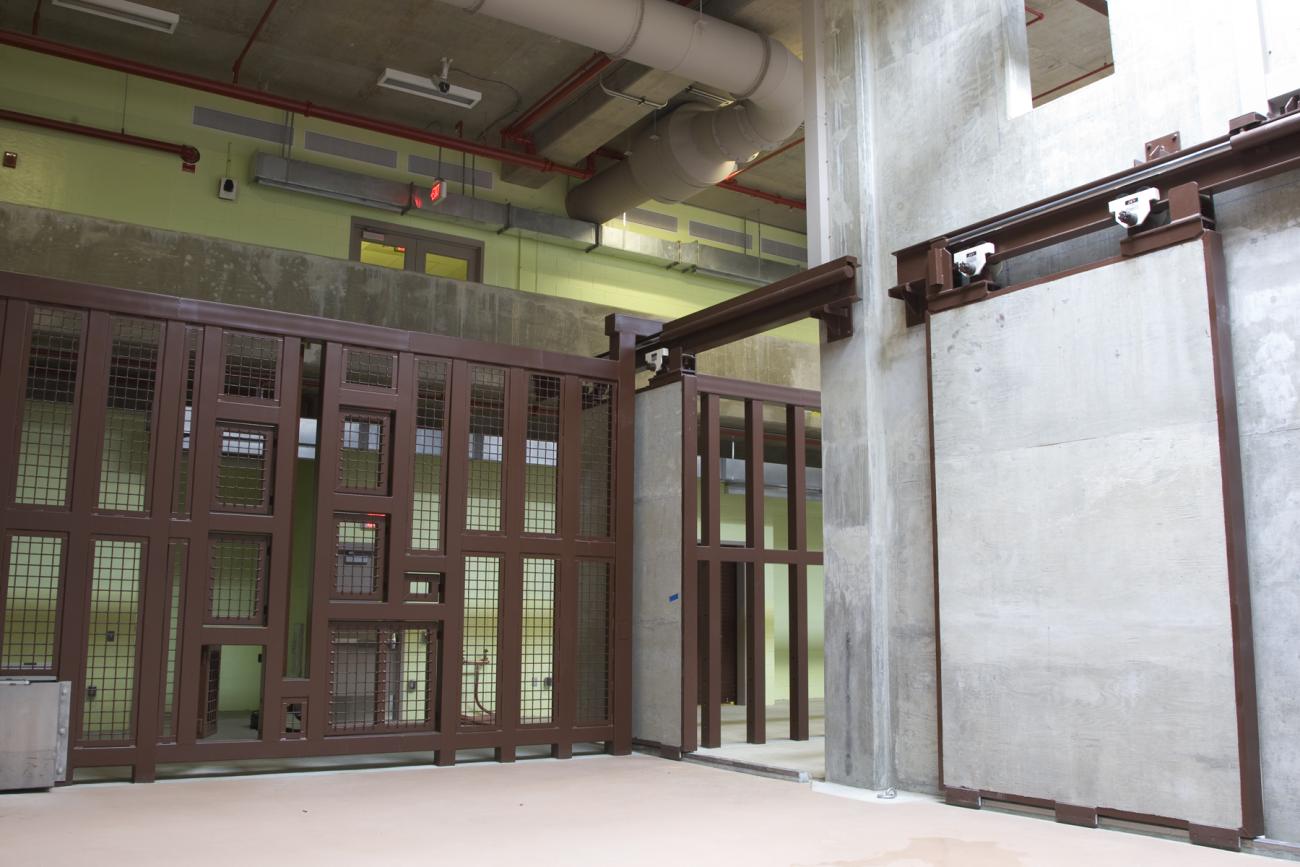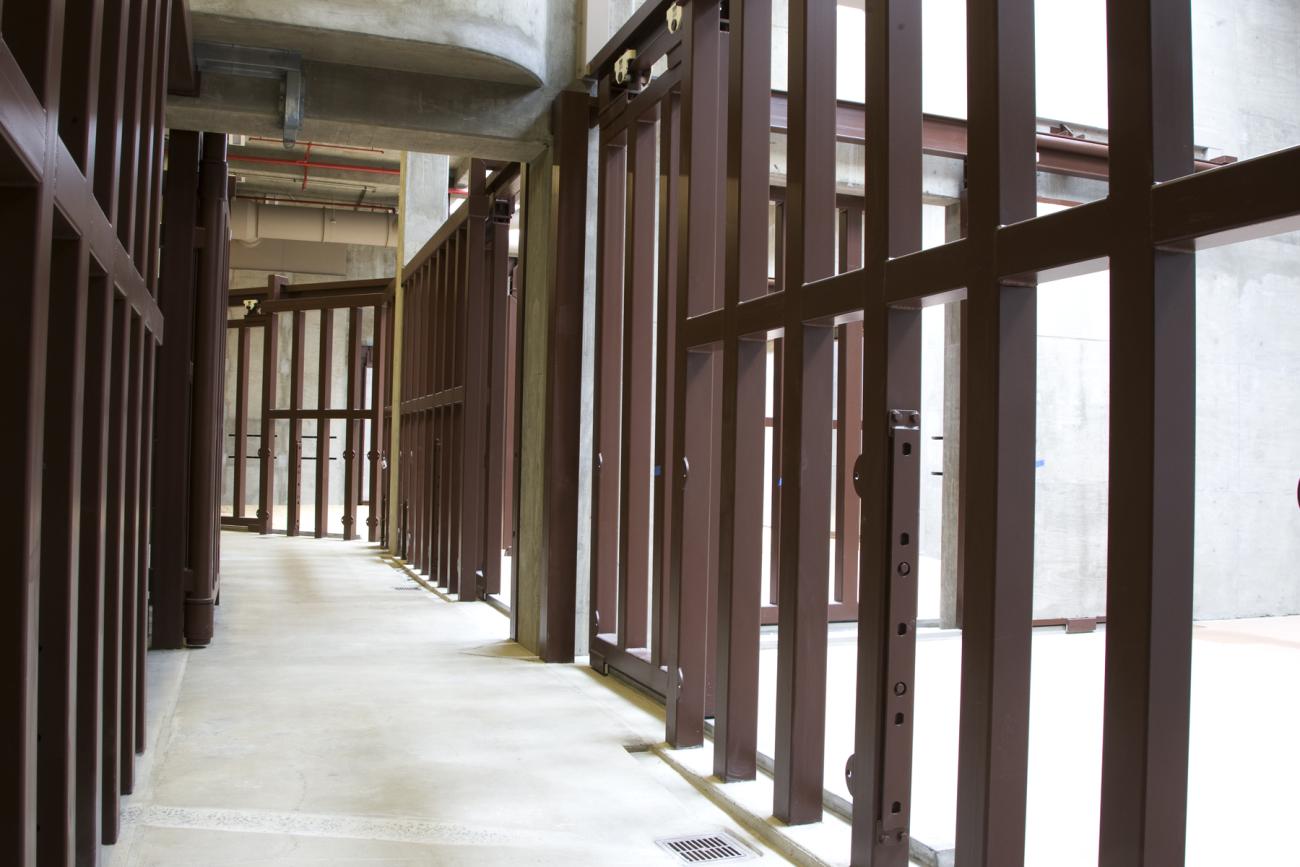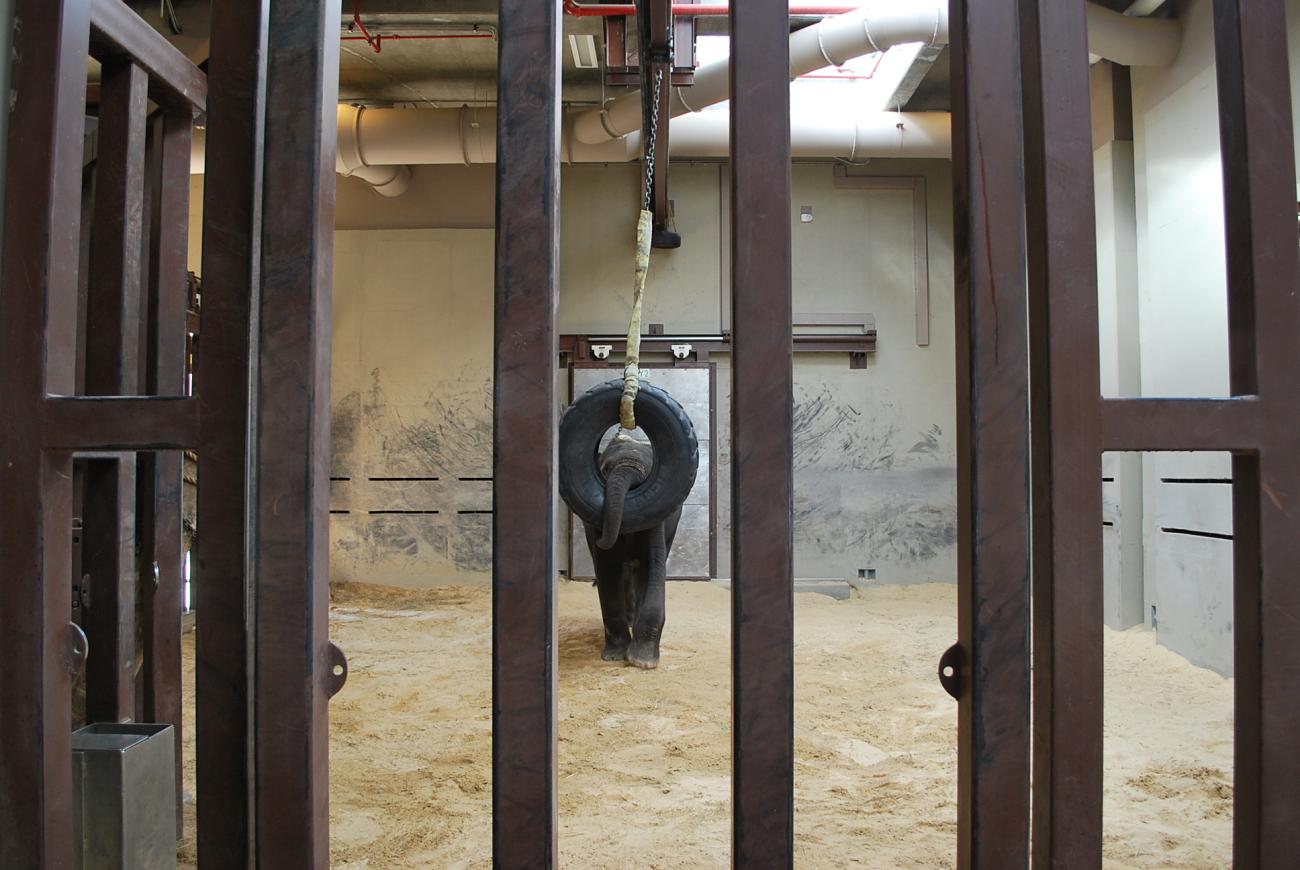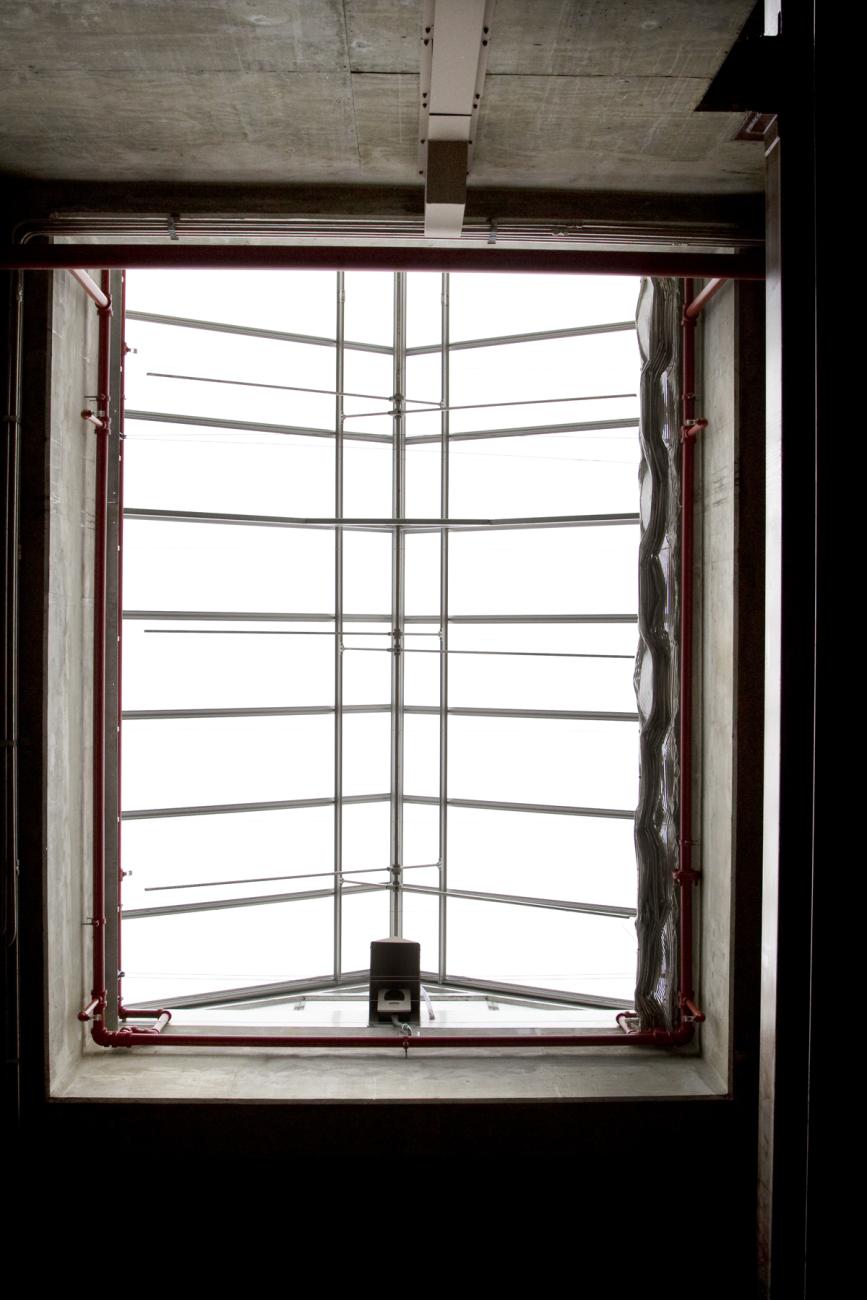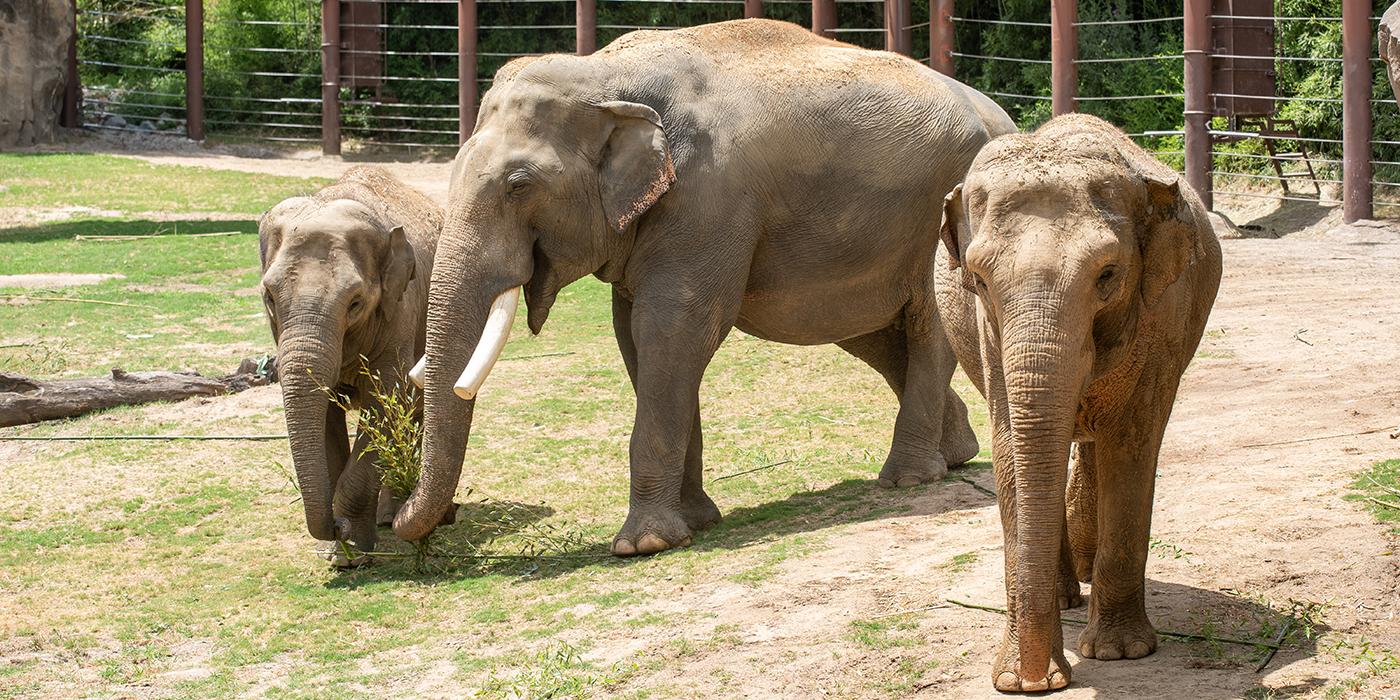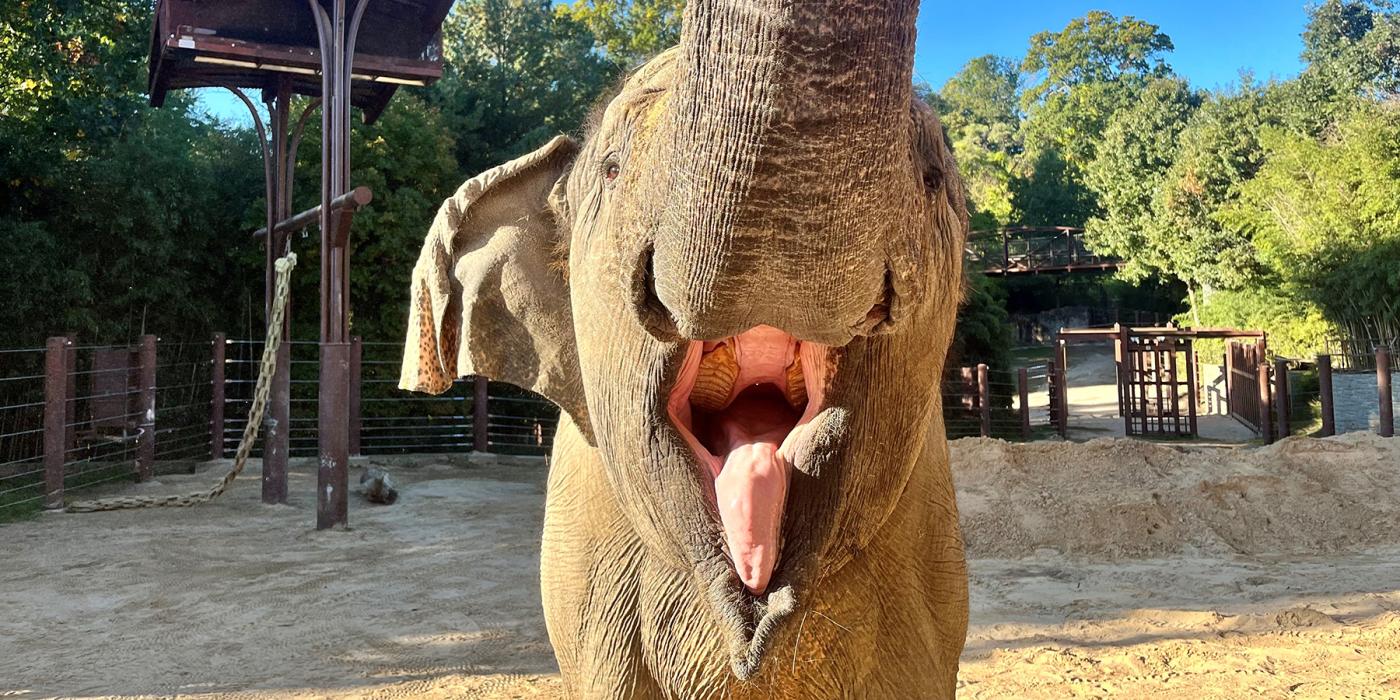Elephant Diaries Mar 05, 2013
As we continue our Elephant Trails photo blog series, our next stop is their house. These photos of Elephant Trails would not be complete without a view of our elephant's indoor living areas. A camera and ladder are helping us to capture every area from an elephant's point of view. Since Shanthi, Ambika and Kandula share the barn, you will see them in some of the pictures as well.
The first phase of Elephant Trails included the construction of a new barn with over 10,300 square feet of living area, in 2010. This barn is full of enrichment and training opportunities while ensuring the best care and comfort for each of our three Asian elephants. Having such a large amount of space gives keepers the versatility to change the set up for each night, further enriching our elephants. Overnight, each elephant has access to the barn. Shanthi and Ambika prefer to sleep inside year-round and they commonly lay down side by side. Kandula, being an independent young bull, spends much of his night outdoors sleeping and eating.
Having five distinct stalls allows us to appropriately manage our resident elephants' social structure - two adult females that live together and one juvenile male. Learn more about how Kandula, Shanthi, and Ambika interact with one another.)
This month we will see the completion of Phase 2 of Elephant Trails and we have started introducing Shanthi, Ambika and Kandula to the Elephant Community Center. Stay tuned to our photo blog to get an elephant's eye view of our new barn and habitats in the coming weeks. Choosing to enter the barn through one of six habitat doors, an elephant discovers bamboo and an enrichment barrel often hung with food inside. Multiple doors in every stall provide versatility and choice in how elephants move throughout the barn. Look closely for silver door tracks on the floor to spot each of the three inside doors in this stall. Each stall also has a drinker, which fills back up after trunkfulls of water are removed for drinking or bathing. The largest stall is filled with natural substrate, offering our elephants ample sand dusting space after morning baths, and is one of Kandula's preferred sleeping areas in the winter. Ambika often digs large holes into the four-foot deep sand. Look above to spot the mezzanine, which gives researchers the ability to observe elephants without affecting their natural behavior. Solid doors between some stalls allow elephants to have access outside if wanted, while keeping barn temperatures warm overnight in the winter for sleeping. Heated floors also help to keep the entire barn warm. The mesh wall with windows, also called a training wall, assists keepers with elephant husbandry, such as foot care. An elephant travels down the transfer hallway from the training wall towards a new stall as keepers call them from one end of the barn to the other. Entering the barn in the evening, our elephants may find varying access to stalls through the transfer hallway, offering each elephant versatility in how and which stalls they use. Enrichment items, such as heavy tires, are suspended from an overhead beam to encourage vigorous play and exercise. Here is a common scene in the morning, taken from Ambika's point of view: Kandula instigates play with Ambika through the bollards of an adjacent stall. Bollards, in contrast to solid walls, allow for tactile and visual contact between elephants, while also offering individuals a choice in how they interact with one another. An elephant sleeping on a heated rubber floor awakens to the first light of day, seen through skylights which run the length of the barn. The skylights open and close automatically to help regulate barn temperature and allow for ample natural light, even when the elephants prefer to stay inside.
Related Species:

